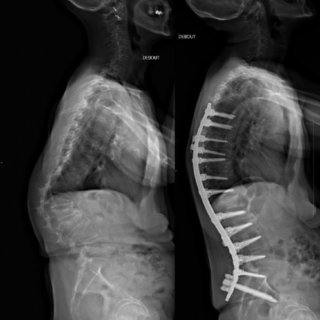
The sagittal plane of the human body is an anatomical diagram that divides the body into left and right sides. The plane can be at the midpoint of the trunk and break it down into two equal halves or from midpoint to midpoint, splitting it evenly into equal parts. The term sagittal was invented by Gerard of Cremona in his text entitled "Culcipede," published in 1497.
This anatomical diagram has many interesting properties, such as the symmetry of all structures in the human body and the ratio of the human head to the torso. This makes the sagittal diagram a good model for human physiology. It is also a good model for analyzing muscle tension.
When using sagittal diagrams of body and muscle structures, it is important to remember that not all muscles are located in the sagittal plane. A good example of this is the shoulder, which starts at the lower thoracic spine and ends at the top of the cervical spine.
The sagittal diagram is commonly used to study the human body. It provides an anatomical basis for studying muscle strength in a variety of conditions. It is also an excellent model for studying biomechanics of the skeletal system and for studying various tissues of the human body. Sagittal charts can also help you understand the relationship of a person's head to the body, especially the neck.
A sagittal chart can also be useful for studying bone growth in adults and the skeletal system in children. The sagittal chart can also be used to study changes in body fat percentage and shape of the human body with age.
Human body sagittal diagram can help you understand the human body more easily and more accurately. A sagittal diagram can also be useful for diagnosing certain conditions, such as cervical spondylosis and other conditions that affect the neck. Since the sagittal plane coincides with the transverse plane, the sagittal diagram can also be used to diagnose problems in the cervical spinal cord and spinal nerve roots.
A sagittal diagram is useful in determining the position of the cervical vertebrae, lumbar vertebrae and the thoracic spine
This diagram is also useful in examining the position of the ribs and hip joint capsule. Since the sagittal is the same as the transverse plane, sagittal diagram is also used to diagnose the problems in the cervical disc, spine, cervical vertebrae and hip joint.
Using sagittal diagram can also be helpful in understanding the relationship of the human body to the earth's orbit and in studying the structural asymmetries of the human body. The sagittal diagram can be useful in interpreting x-ray results and determining the position of the head in relation to the rest of the thorax.
There are several different interpretations of the sagittal diagram that can be useful for the study of the human body. These interpretations can be used for explaining the relationships of the body parts to their surroundings.
Another interpretation of the sagittal diagram that can be useful for the study of the body is that of linearity. In this interpretation, the sagittal is interpreted as a circle that runs around the entire body and shows the location of the body parts as the body moves.
Another interpretation of the sagittal diagram that can be useful for the study of the body is that of symmetry. With this interpretation, the circle is interpreted so that it covers the whole body and shows the location of each organ and each part of the body as the body moves. This can be used to explain why there are some organ areas on one side of the body while the other organs and parts are on the other side of the body.
Another interpretation of the sagittal diagram that can be helpful in understanding the body is the interpretation that of rotation. In this interpretation, the circle can be interpreted so that the body's organs and parts are not on the same side of the circle but the body moves around the circle and thus creating a rotation.